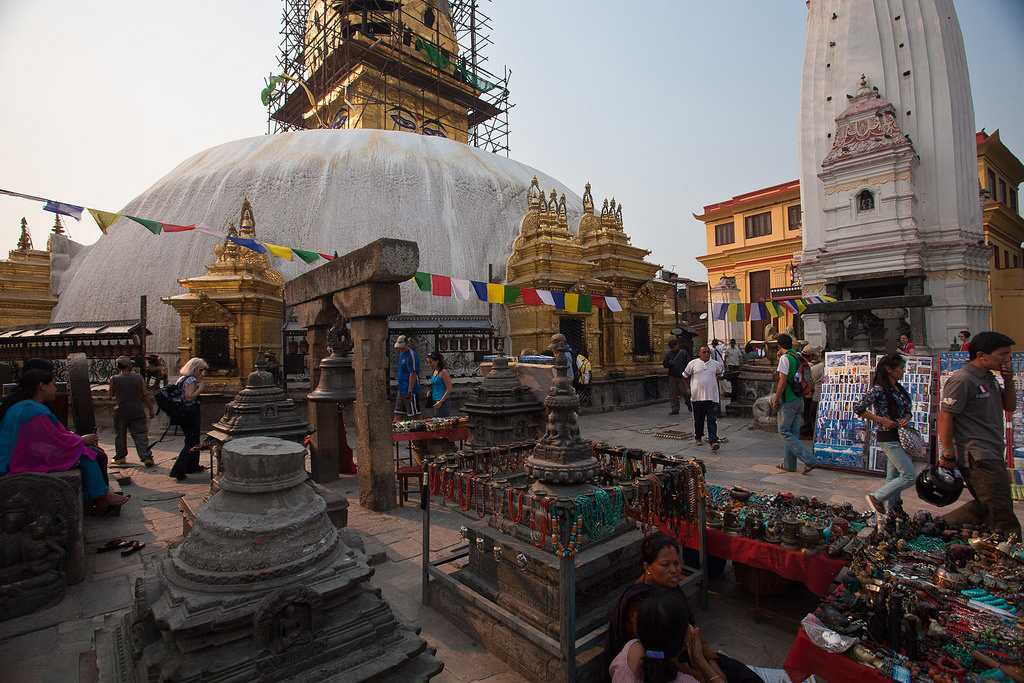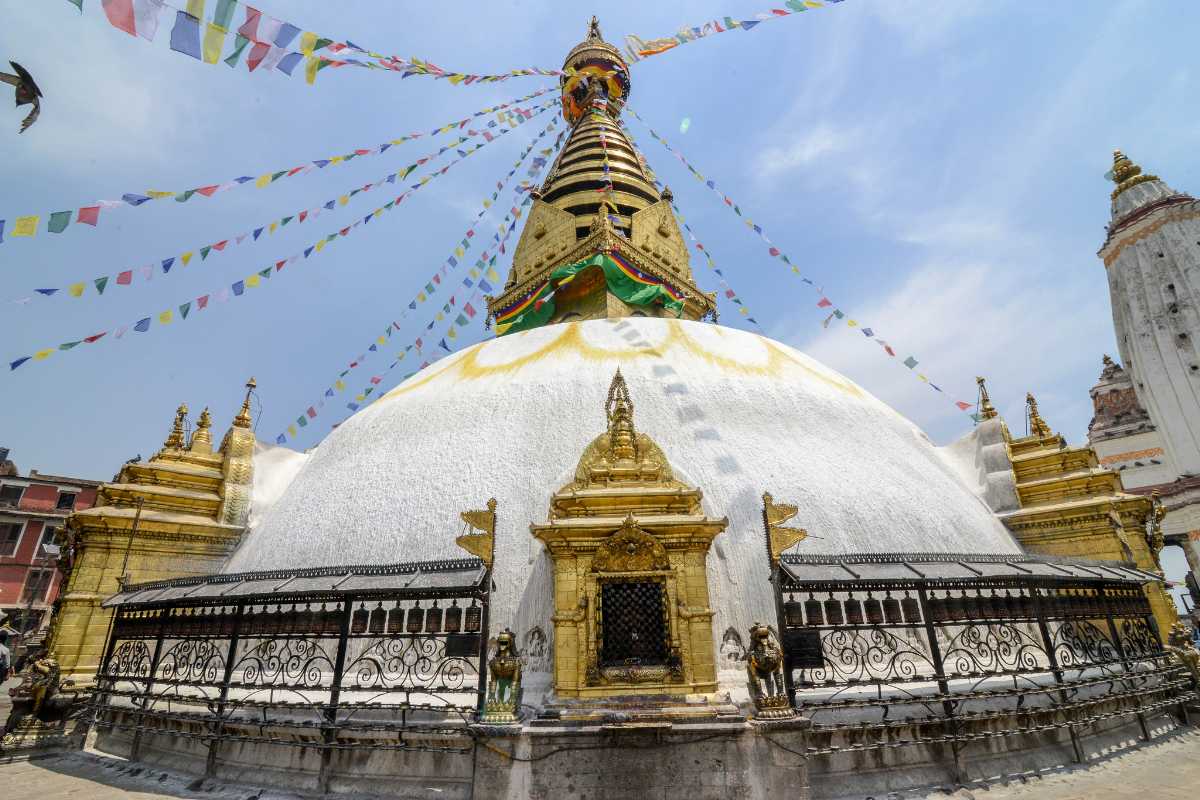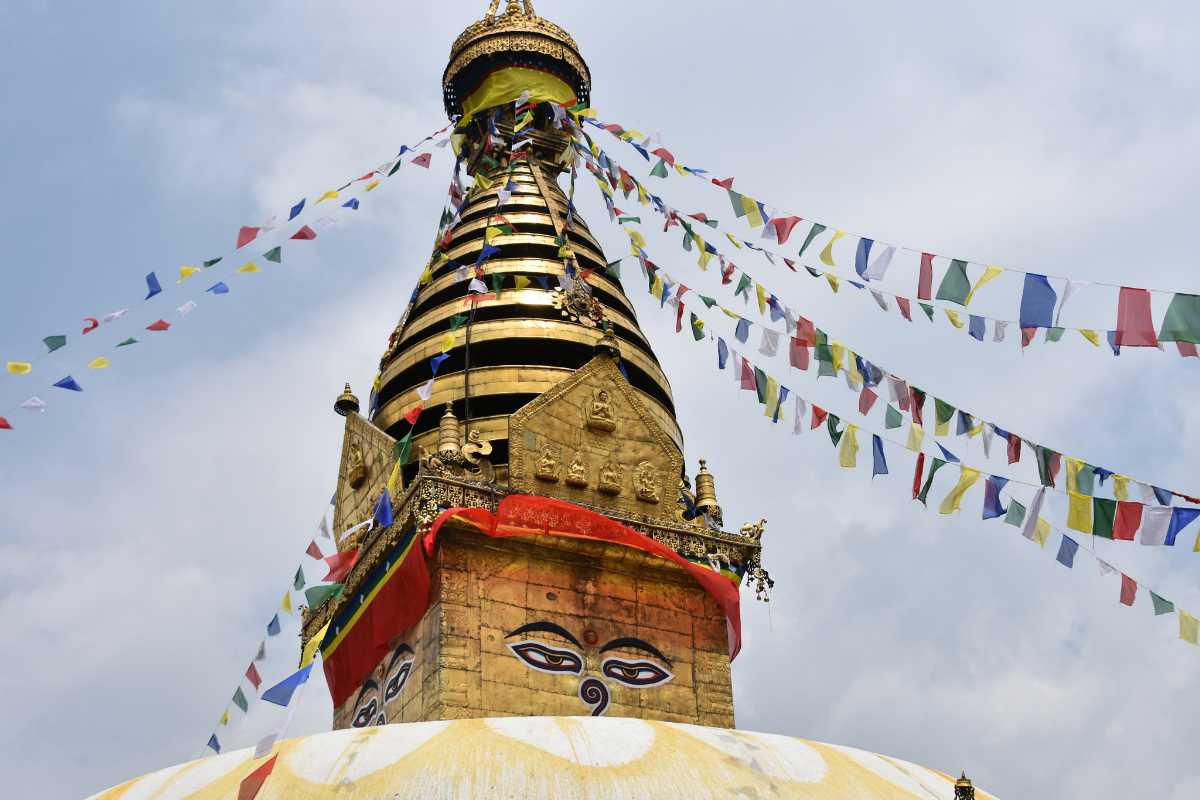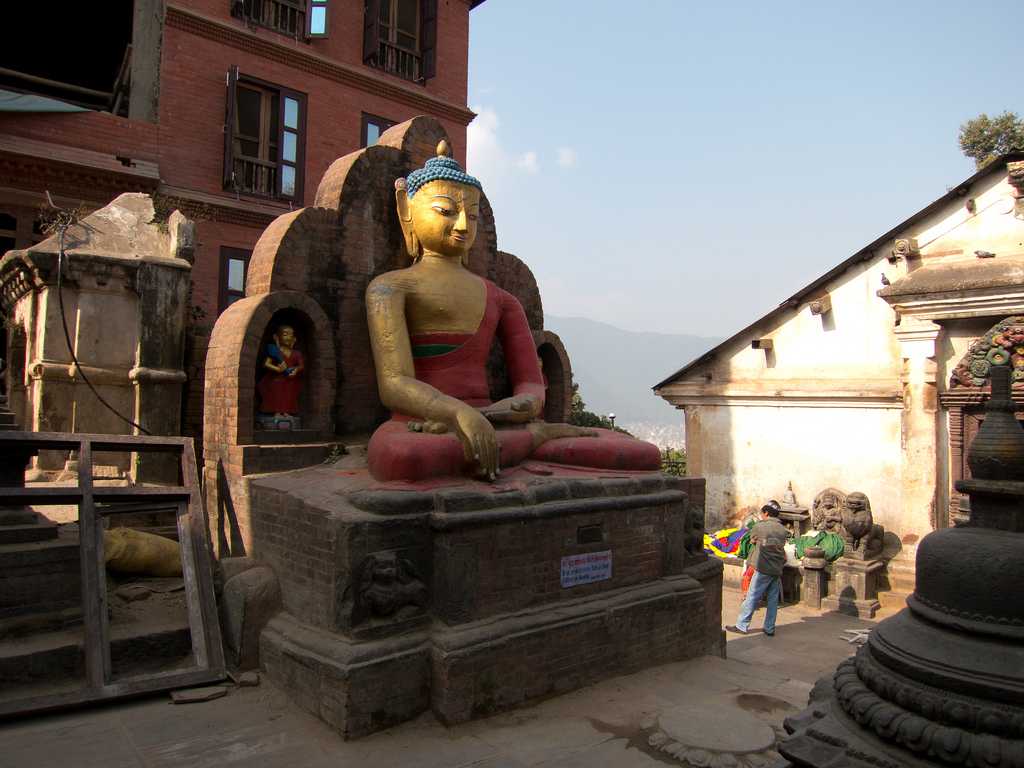Swayambhunath Temple
₹ 135 onwards
View Kathmandu PackagesWeather :
Label : Top Attraction
Tags : Temple
Timings : 24 hours
Entry Fee : Foreign Nationals: NPR 200
SAARC Nationals: NPR 50
Nepalese citizens: No entry fee
Swayambhunath Monkey Temple
Ways to Experience this attraction
Swayambhunath Temple, Kathmandu Overview
Perched on top of Semgu Hill, located on the outskirts of the Kathmandu Valley, the Swayambhu Temple temple is one of the most important religious shrines in Nepal. The sanctum is one of the holiest sites among Buddhists and Tibetans. Once you are inside the temple, make sure to climb the 365 steps to reach the top and take in the picturesque, panoramic view of the capital city of Kathmandu.
With a white dome stupa and an array of shrines, this place draws people to it daily. Circumnavigating the temple in a clockwise direction is a common practice among the pilgrims since it is believed to wash away all sins. Also referred to as the Swayambhunath Temple, Swayambhunath Stupa, and the Swayambhu Maha Chaitya, this holy place of worship has been in existence for several centuries and has overlooked the greater portion of the Kathmandu Valley ever since. Owing to the several monkeys which have made the area around the complex their permanent abode, this temple has also earned the quirky nickname of the "Monkey Temple".
Read More on Swayambhunath Temple
Tips
- Before entering the temple, it is advisable to cover your shoulders.
- You can hire a guide to show you around the entire Swayambhunath complex for NPR 1000.
- Do not hurt the monkeys, but be careful with your belongings around them.
Legend Behind the Name

It is written in the Swayambhu Purana that the entire Kathmandu Valley surrounding the temple used to be filled with a lake which attracted large groups of masters and saints. The Buddha Vipassana was one such saint who visited the lake and threw a lotus seed into the waters. From this seed grew a large and beautiful lotus, in the centre of which appeared a stupa that had risen by itself. Hence the place acquired the name, Swayambhunath, which means the 'self-existent one' or 'self-created'.
The Tibetan name for the area stands for 'Sublime Trees' because of the tree varieties found here.
In addition to the tale behind the name Swayambhunath Temple, its nickname, the Monkey Temple, also has an interesting backstory to it. It is believed that Manjushri, who was the Bodhisattva of Wisdom and Learning, was brought up on the hillock on which the temple stands today. He is said to have grown his hair long, thus inviting head lice to it. Each of these head lice is believed to have transformed into a different monkey, all of which live near the temple at present.
Architecture of Swayambhunath Stupa

The spectacular Swayambhunath Temple has a structure which is a storehouse of symbols. The first features that allure the visitors are the statues of the two lions which stand as guards at the entrance of the temple. The stupa comprises of a large, hemispherical dome at the base, which represents the entire world. Statues of the Buddha adorn the bottom of this dome, and prayer wheels, engraved with the chant "Om Mani Padme Hum", surround the base.

At the top of the stairs inside is a vast, iconic lightning bolt, called the "Vajra", which is planted on top of a smooth copper base, It represents the "dharmadhatu" and is in the form of a mandala. Above it is situated a cubical structure with the eyes of the Lord Buddha painted in all four directions. These eyes symbolise compassion and wisdom. Above each pair of eyes is the third eye of the Buddha, which is said to emit cosmic rays when he preaches, thus acting as a messenger to the celestial beings and inviting the ones who are interested in descending to the earth and listening to him. Although it cannot summon the creatures belonging to the lower realms, the third eye relieves their pain and suffering when the Buddha preaches. Drawn like a nose in between the two eyes, is a curly symbol which is similar to a question mark in its appearance. This figure is the Nepali symbol of the numero uno, which is symbolic of the unity of all things on this earth and also signifies the sole way to achieve moksha through the teachings of the Buddha.

On all four sides are engraved the figures of the five Buddhas, known as the Pancha Buddhas, which represents the Buddha in Tantrayana in a metaphorical manner. The Pancha Buddhas engraved on the four sides of the cubical structure are - Vairochana, who is the master of the temple and occupies its core, Ratna Sambhava, who symbolises the cosmic element of sensation and sits facing the south, Amoghsiddhi, who faces north and is representative of the cosmic element of confirmation, Akshobhya, who sits facing the east and signifies consciousness, and Amitabha, representing the cosmic element of name while facing the west.
The pentagonal Toran, with figurines carved in them, are present on top of each of the four sides. Proceeding upwards from the Toran are thirteen tiers. Each tier is representative of each stage of nirvana. It signifies the thirteen steps of spiritual realisation that every sentient being has to go through to achieve enlightenment. The small space above the tiers, called Gajur, enhances the beauty of the stupa. Finally, the fluttering prayer flags believed to carry the prayers of the devotees to heaven, wrap up the beauty of the structure magnificently.
Top Hotel Collections
Top Hotels Near Swayambhunath Temple
Swayambhunath Temple Reviews

Have a Question on Swayambhunath Temple?

experience.